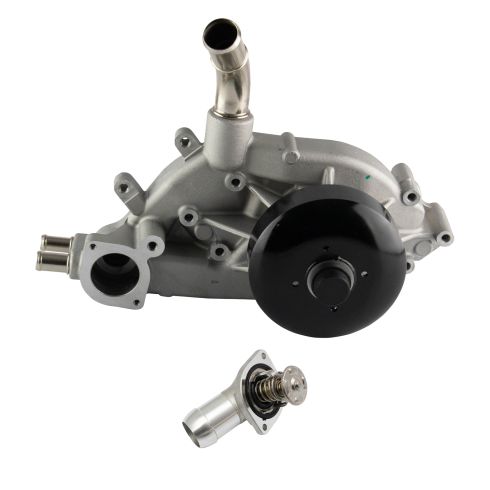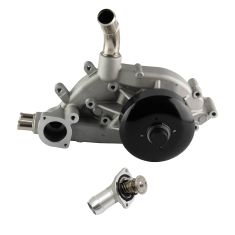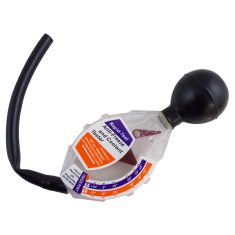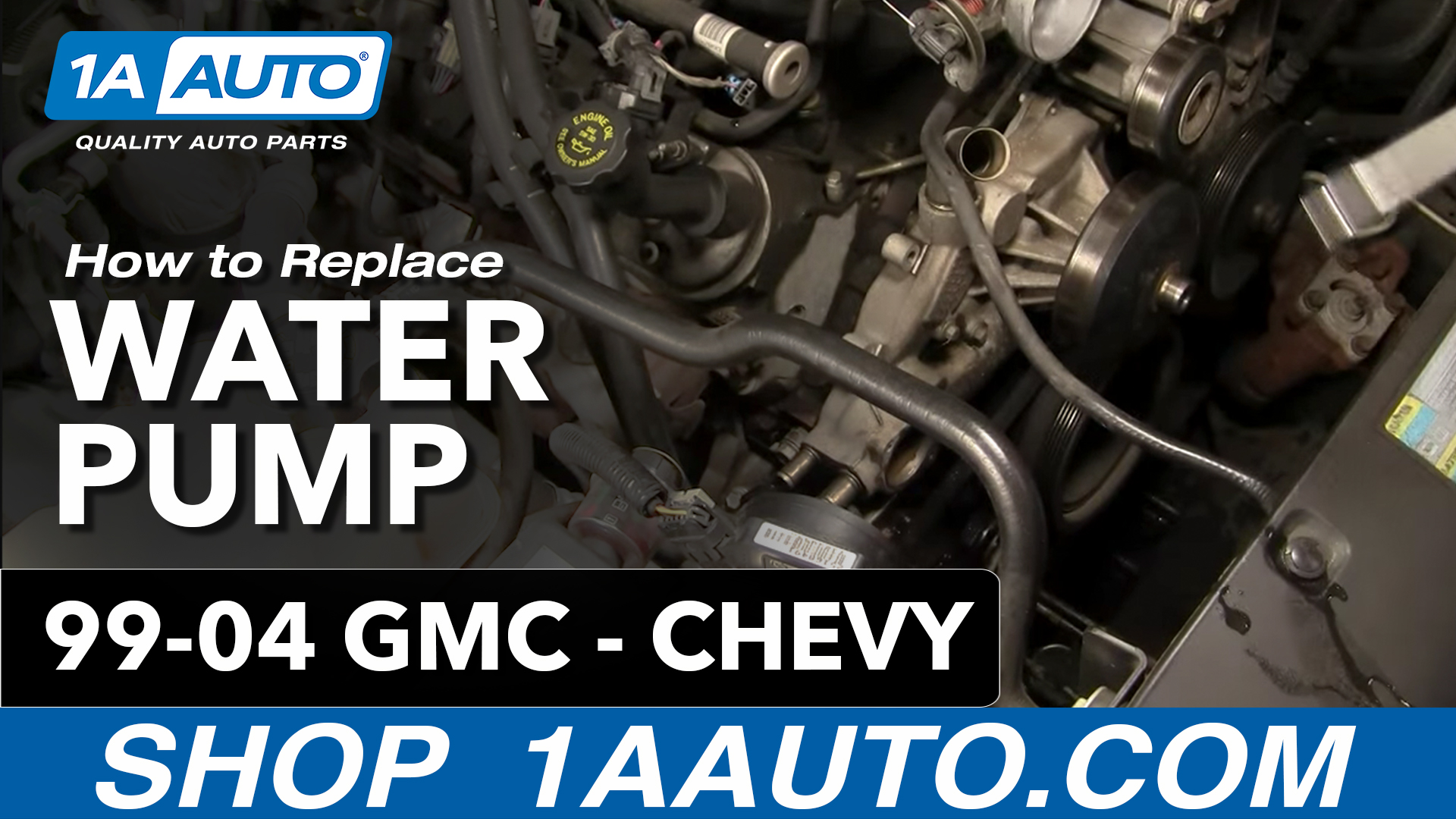1AHCK00019-Engine Water Pump TRQ WPA06894











Replaces
Engine Water Pump TRQ WPA06894






Frequently bought together
Product Reviews
Loading reviews
4.62/ 5.0
39
39 reviews
water pump order
February 24, 2017
Order was handled fast and soon as the next business day it was is way to me .
But on getting it parts wore missing , Got the site and e-mailed them , with in 12 hours or less I got a e-mail reply I like the fast answer when parts are missing The made GOOD on there 100% satisfaction , got replacement order with all the parts AT NO cost to me !! I e-mail them back inclosed was photos I took of there second box when I got it Informed them they needed better taping on all the folds so small parts don't fall out .
Replacement parts sold the way they should be.
March 6, 2017
Shipped quicker than expected and fit just like OEM parts.
02 Silverado Waterpump
April 1, 2017
Great product. Used the awesome instructional video too!
Ok
July 18, 2017
Bought for my 2001 Chevy Silverado 5.3
After 25k miles on it and it leaked at the upper radiator hose portion were the metal bend meets the water pump. I threw it away and bought one from the dealer because the original lasted 305k.
Perfect part..., perfect installation video...
September 30, 2017
My water pump was easy to remove and replace. The video duration was very close to my actual times
Its alright.
October 3, 2017
It was as ordered but the only problem was that the gasket pieced weren't rubber so i had to buy some with rubber O rings.
Perfect fit fast delivery
November 2, 2017
No complaints. The kit came with everything I needed, and was a perfect OEM fit. Very fast shipping and great price. 1A Auto video for installation was very helpful.
2003 Chevy 5.3 Water Pump
November 19, 2017
Parts arrived very fast (as with everything Ive ordered from 1A Auto). Exact fit. Only been on vehicle about a day or so, should be fine.
Very Good Product and Service
December 5, 2017
Pump works great, was a perfect match just as described!
Great company
January 1, 2018
Order was cheaper then in stores and order arrived ahead of schedule Thank You for your help
EXCELLENT!!
January 16, 2018
EXCELLENT PART, PRICE, AND MOST IMPORTANYLY, THE SERVICE, ABOVE AND BEYOND MY EXPECTATIONS. STAFF VERY COURTEOUS AND VERY HELPFUL. MY PART GOT LOST IN SHIPMENT, BUT NO HESITATION ON SENDING A REPLACEMENT PART AFTER MAKING ONE CALL, EVEN EXPEDITING THE SHIPMENT. WILL DEFINITELY RETURN AND ORDER FROM YOUR COMPANY AGAIN, THANK YOU VERY MUCH!!!
Water Pump
January 25, 2018
The Water Pump fit great and having a video to go by always makes this my first choice for parts!
Missing Gaskets
March 19, 2018
Got this in and it was missing the gaskets had to go locally to pick them up. Also shipping was extremely slow and would purchase from amazon prime next time
Great product
April 23, 2018
Thank you A1 Auto! The water pump for my Chevy suburban was a perfect fit and easy to install! Im a very satisfied customer!
Water pump, tensioners, idlers & belts.
May 19, 2018
Vidio was spot on. Parts seem quality. Belts are Gates, so I know they're quality. 3 hrs to disassemble and put in new. Highly recommend 1A. Parts arrive early (usually) and are correct.
Excellent
May 28, 2018
Everything was excellent all the way from the ordering to the online videos of the installation. This guy who never works on cars anymore was able to do all of it with ease! Great all the way around!
Great Service, Great Quality
December 7, 2018
Honestly, I was a little skeptical about 1A Auto at first. I mean, how is it possible to get quality parts or less than almost every other parts retailer on the web. Somehow, these guys have cracked the code. I recently purchased a water pump w/ thermostat housing and new belts for my 2001 Chevy Tahoe. This was my second time purchasing parts from 1A Auto for my Tahoe and just like the first time, I received quality parts to my door Within days. Best part is, I saved $300-400 by following the video 1A Auto has on how to replace a water pump in my vehicle. The only reason I did not give 5 stars is that I had to get a special tool, called a fan clutch puller wrench, to remove my fan from the water pump. In the video, the demonstrator used an adjustable wrench and did not mention the possible need for this special tool. Overall, I am very satisfied with this company and Im sure you will be too. Good luck on your project and happy wrenching.
Quality product, help how to video
March 23, 2019
Order this product it was exactly what fits my vehicle thanks to 1a auto fitment chart. I installed it my with no problem at all thanks to 1a auto water pump installment video. Everything came with product I needed, I saved a lot of money using 1a auto services not the first time either I use there quality products and videos for most of my vehicle needs. Fair prices, quality product, and very helpful how to video you cant beat it!!! 1a auto is my go to service thanks a lot!!!
Great people to order parts
July 3, 2019
Parts Quality was a1 easy to order everything was perfect will order from here
Fit Perfect.
February 16, 2020
This water pump went on a LQ9 Cadillac motor installed in my 1965 Shortbed 4x4 Chevy.
Glad to use 1A Auto. Thanks.
Perfect fit!!
May 6, 2020
Fit perfectly for my 5.3 v8 gmc sierra. As always you people are great.
Water Pum
November 24, 2020
Perfect fit and easy installation after watching the video!!
I highly recommend 1aauto I will be ordering more parts for my truck.
Water pump
April 22, 2021
Parts fit perfect no issues at all.Very fast shipping.And great how to videos
My first time was not gentle
September 13, 2021
Removal process was brutal cuz my fan was not as easy like in ur how to video but car maintenance is situational. The pump was in great condition and the thermostat and after installation worked great. I'm definitely buying from u guys again.
Quality Pump
May 16, 2022
Great quality pump and a good price. The instructional video was excellent.
Water pump and thermostat together fit perfectly.
January 4, 2023
Replaced the water pump and thermostat perfect fit.
Dynamite service
January 12, 2023
Parts were on time came with everything promised, and fitted perfectly right to my door step. Great job 1A Auto
Just what I needed
March 12, 2023
Perfect fit and function on 02 Suburban
January 8, 2024
Really happy with the item, worked perfectly great on my 2003 GMC Sierra 1500. Would recommend.
GMC Yukon 2003
January 15, 2024
It fit perfect on my truck. Easy to install and she's running like new. No more leaks hopefully for a very long time.
Bad pump
February 4, 2024
It leaks at the upper radiator fitting where the steel tube is pressed into the pump.
Impressed
February 5, 2024
Great quality and fit.
Great product
February 7, 2024
the new pump works great, went in to proper position with no issues.
March 4, 2024
Worked great for my truck made it run cool again!
Quality product
March 10, 2024
Quality product!
March 25, 2024
So far so good , it's been 2 weeks now no leaks yet.
Water pump
May 30, 2024
Arrived on time. Perfect fit. Video was helpful
Awesome product
August 12, 2024
Great product exact fit
Not impressed at all. Becoming common place for Aftermarket.
[{"url": "https://images.turnto.com/media/pNISJll75W64CYGsite/4ceb5603ae3cbde62fd5ea17b15e0195_1734795259386_0.jpeg", "caption": "?"}]
December 21, 2024
I'll start with saying it could've been one dud out of 1,000's. But in my experience Metal gaskets were in the bottom of the box being crushed by the water pump, not the biggest deal but pretty careless. I put the water pump on and within 24 hours after putting only 60 miles at most water pump is leaking. You're a lot better off paying the extra money from a dealer for OEM. Otherwise Amazon has ACDELCO 12703898 (water pump & gaskets) for $160. So there goes another $200+ on parts and coolant. Most importantly it's going to take time out of my day to replace an inferior Chinese part. Buyer beware! Also I want to add the only positive experience is 1Aauto does have very informative and direct replacement videos for their parts, quality just isn't there in the product.
Customer Q&A
so if the pump starts leaking over its lifetime, is it covered?
June 12, 2016
10
Am not to sure if itis covered but if i told them it was leaking I am sure they . Would replace it
June 13, 2016
Ralph S
10
Yes its covered by a limited lifetime warranty if it fails they will replace it.
June 13, 2016
Dan K
10
They will cover it but hang on to everything that's attached to the water pump.....
June 13, 2016
Timmy B
10
Lifetime Warranty
This item is backed by a Limited Lifetime Warranty. In the event this item should fail due to manufacturing defects during intended use, we will exchange the part free of charge (excludes shipping charges) for the original purchaser. Please keep your invoice for proof of this warranty.
June 13, 2016
Brian F
10
That's what the warranty says I've never had any issues. I purchased this pump for my truck because coolant was disappearing. After pulling the pump I noticed the gasket was gummed up and out of shape so I just replaced the gasket and have the pump set aside I case mine or one of my many friends that have Chevy trucks goes out. Haven't lost any coolant since gasket replacement (40,000) mi ago. So I can't speak for this pumps reliability all I can say is if you're replacing due to coolant loss make sure it's not just the gasket that could save you a 100 bill. Good luck it's a pretty easy job maybe an hour but I used gasket sealer on both sides of the new gasket so I let that set up overnight before refilling coolant. Hope this helps.
June 13, 2016
Eric C
whats the temp rating for the supplied thermostat?
January 11, 2018
10
The temp rating is 186 degrees.
January 11, 2018
Alex P
do you need sealer on the gaskets. Pump and thermostat?
November 13, 2018
10
No I don't think I used any
November 13, 2018
J O
10
I used a thin film of sealer on the gaskets and had to create a gasket on the pump.
November 13, 2018
Vadim L
10
I don't think so, but we put some on just for safe measure.
November 13, 2018
Carl J
10
I did use a sealer on the pump.
November 13, 2018
Matt Y
10
You don't as long as all of the old gasket is removed and the surface isn't damaged (ie don't use a razor blade or sandpape to clean the surface).
November 14, 2018
Shaun B
10
Sealer is not needed for this install.
November 14, 2018
Christa R
What dimensions of the 10mm bolt for water pump?
March 18, 2019
10
Hello, if you do not mind could you rephrase the question? We just want to accurately answer your question.
March 19, 2019
Corey M
What is the brand name of this water pump?
April 24, 2019
10
1A Auto's house brand parts are manufactured by various aftermarket companies specifically for us and built to your vehicle's exact OEM specifications.
April 24, 2019
A C
Will this work for the 4.8 L engine?
February 17, 2022
10
Yes, this is listed to fit the 4.8 L engine as long as the 8th digit of your VIN is the letter V.
February 17, 2022
Kelly S
will this fit on a 6.6 gas?
February 25, 2023
10
This part will not fit your vehicle, but we may have a part that is listed to fit.
Please enter your vehicle's year make and model in the search bar at the top of the page. This will display parts guaranteed to fit your vehicle. Just be sure to verify all of the information shown in the Vehicle Fit tab before ordering.
February 25, 2023
Ricale A
Does this item include gaskets for the water pump . It's not in the description?
January 9, 2025
10
Thank you for your inquiry! The gaskets will not be included.
January 9, 2025
Jean O











